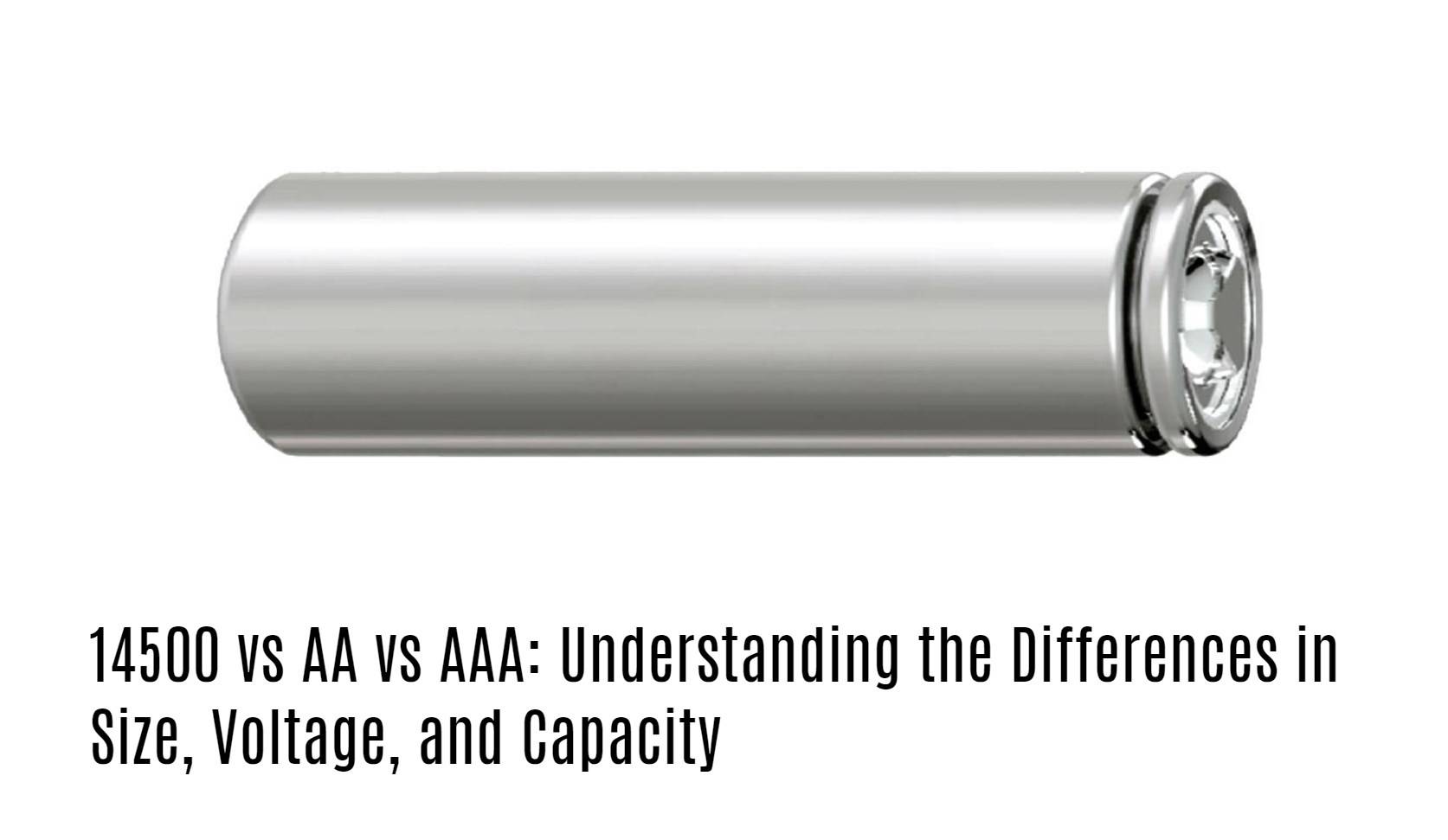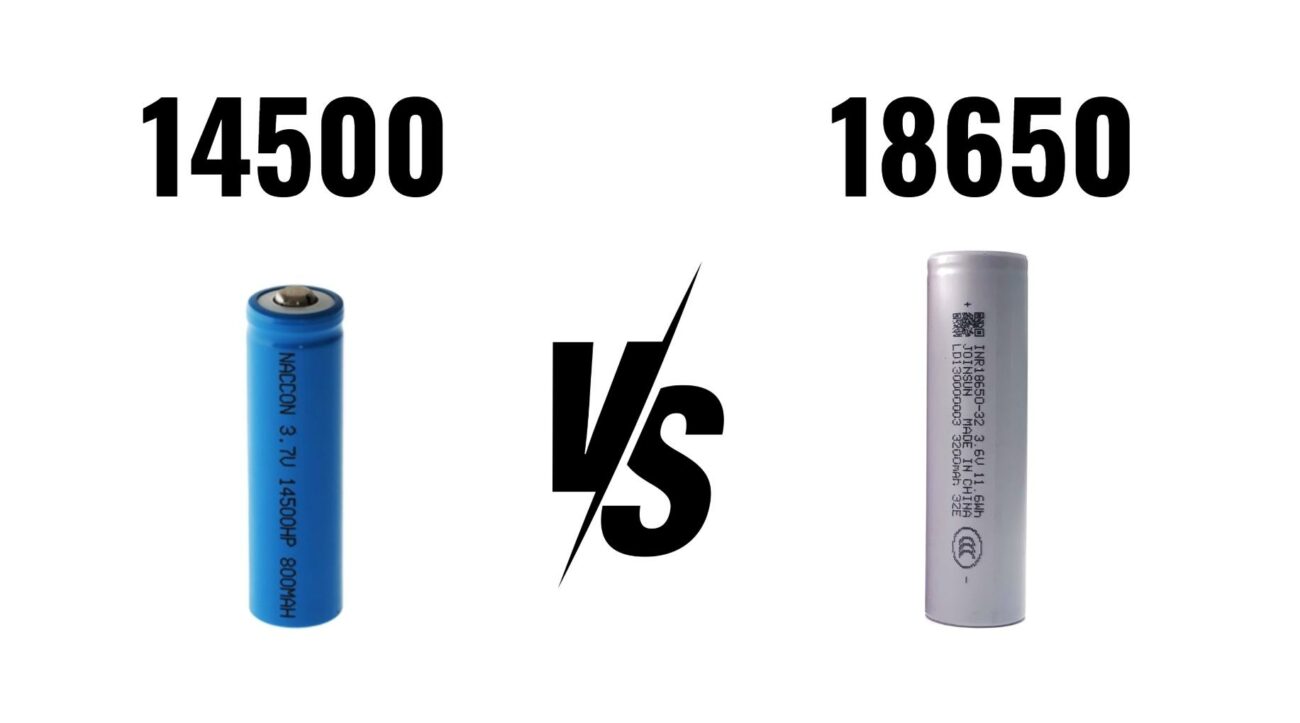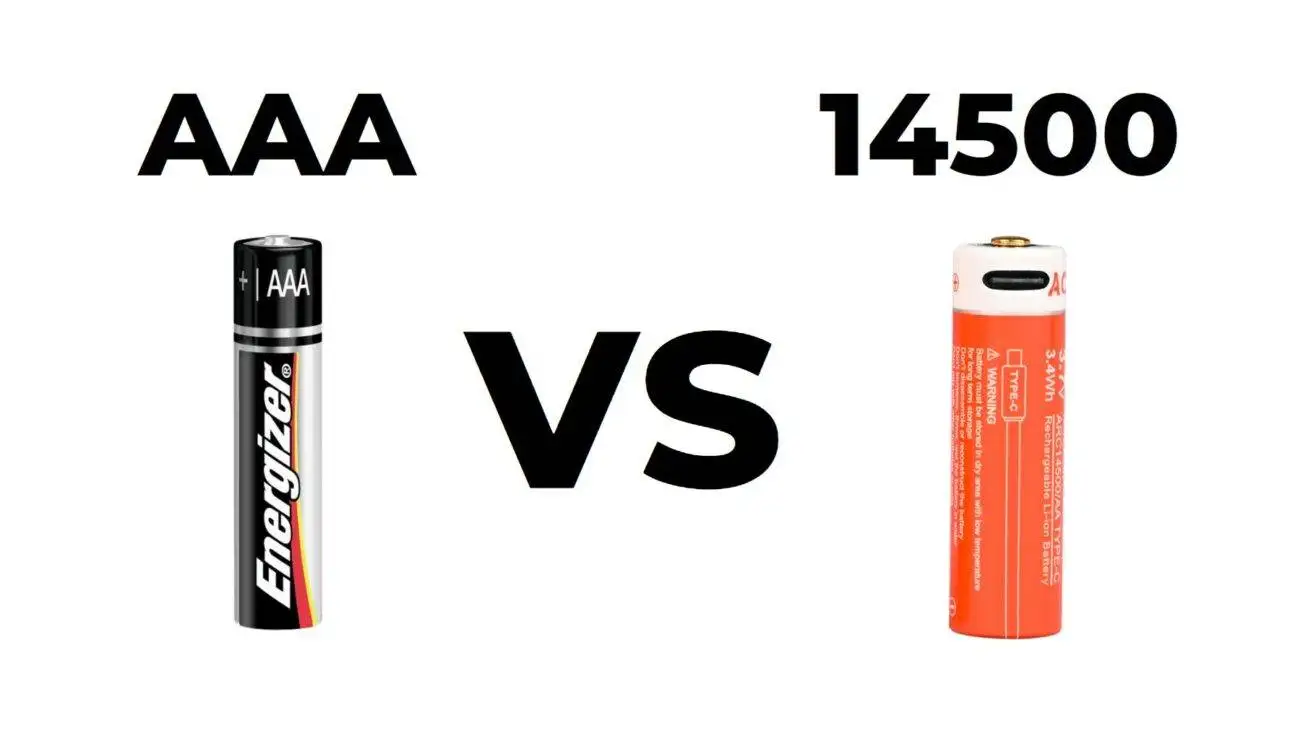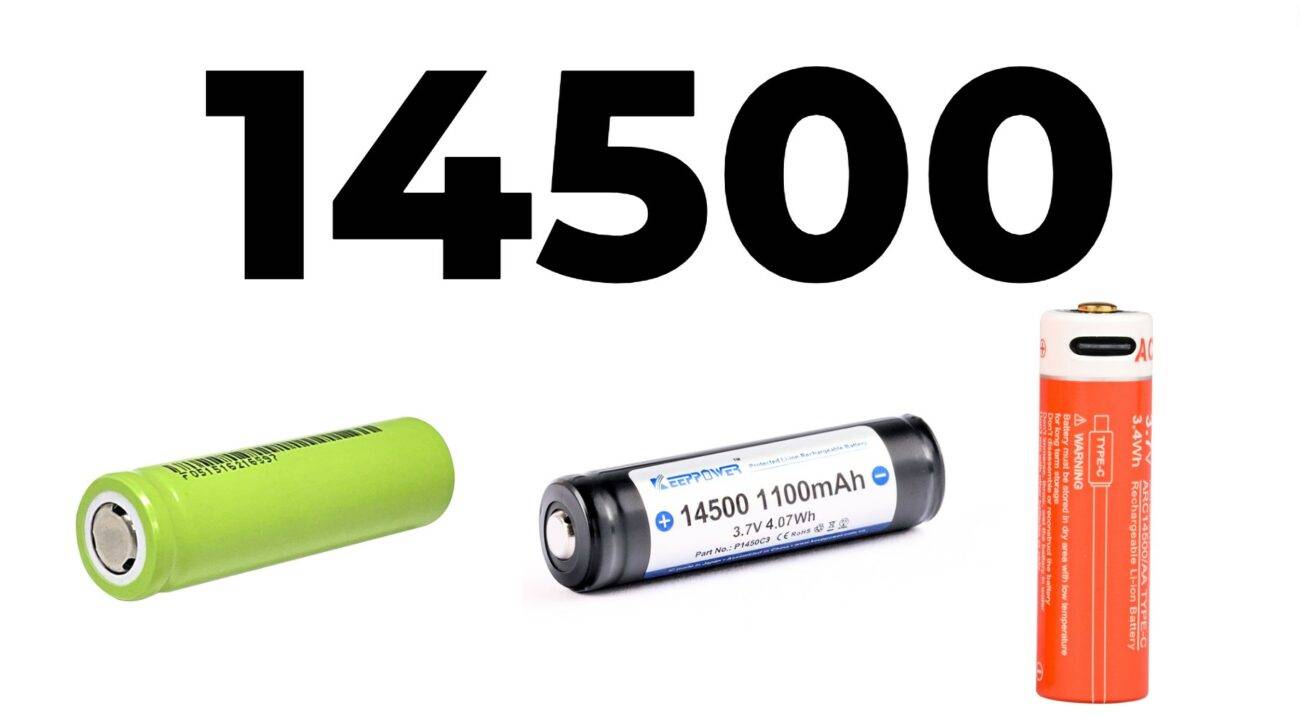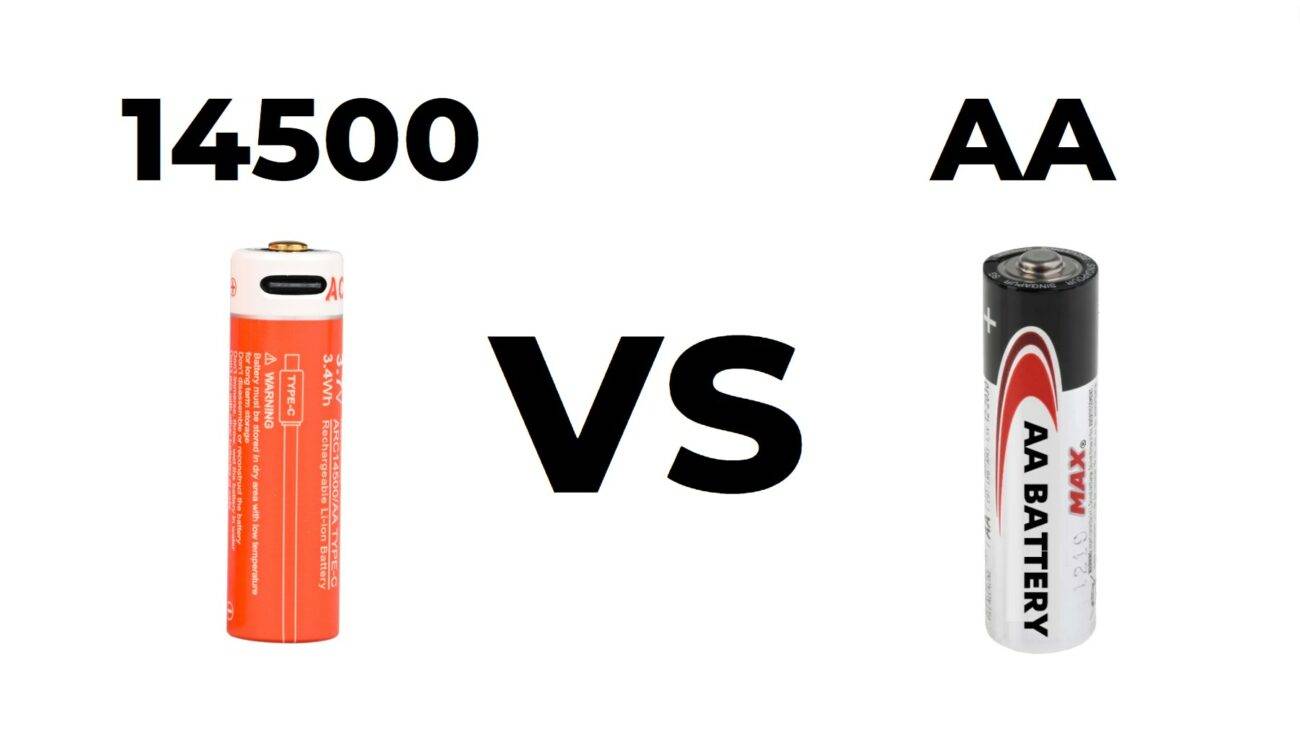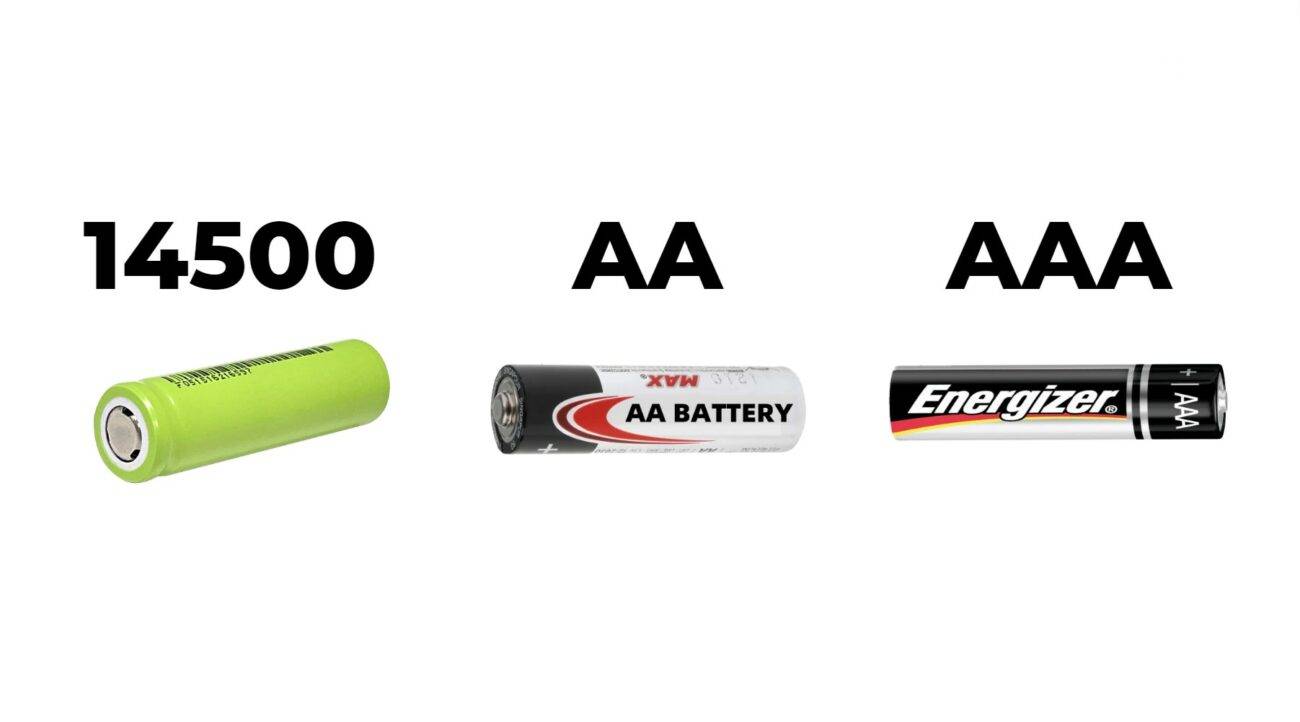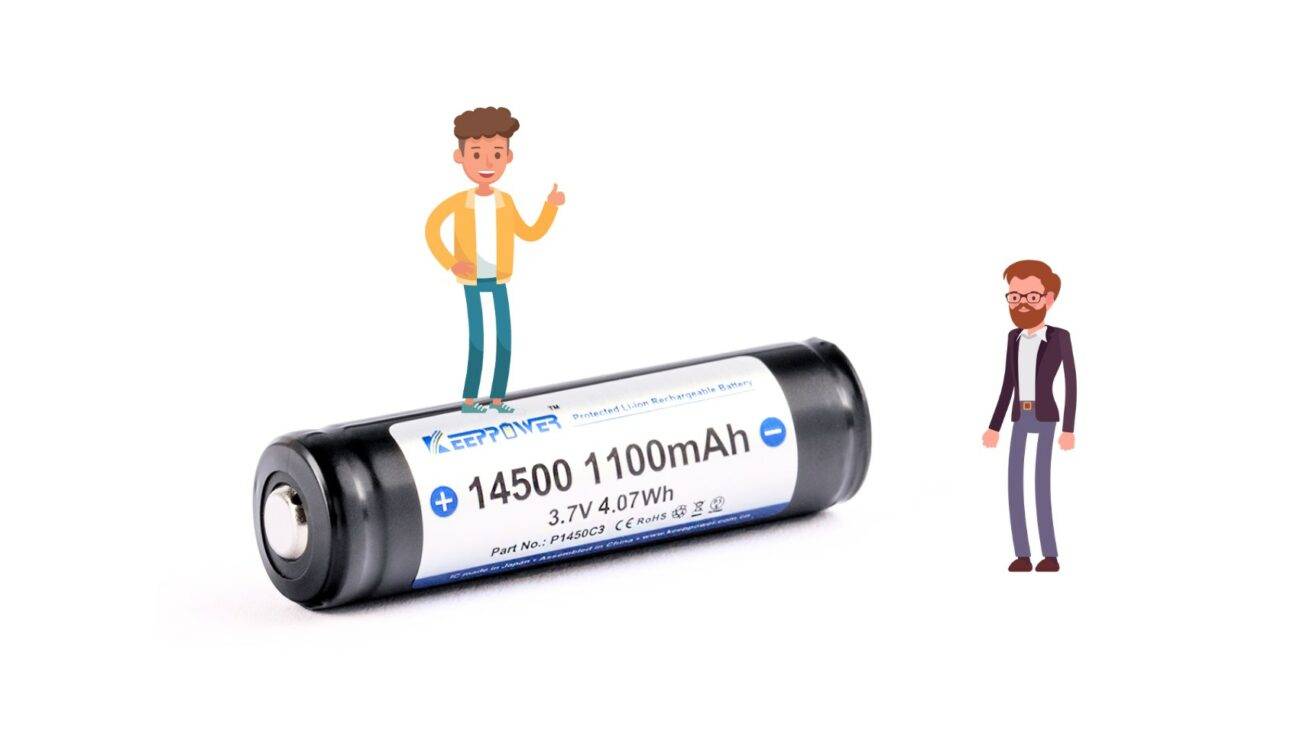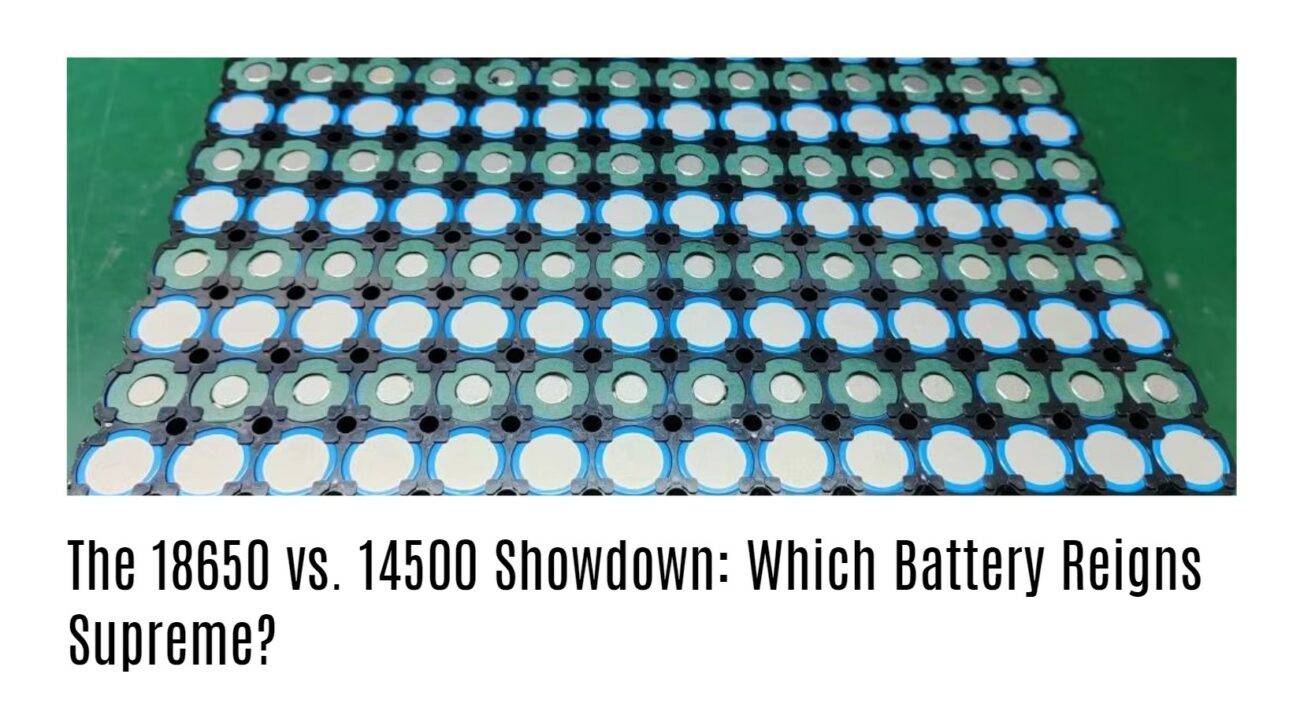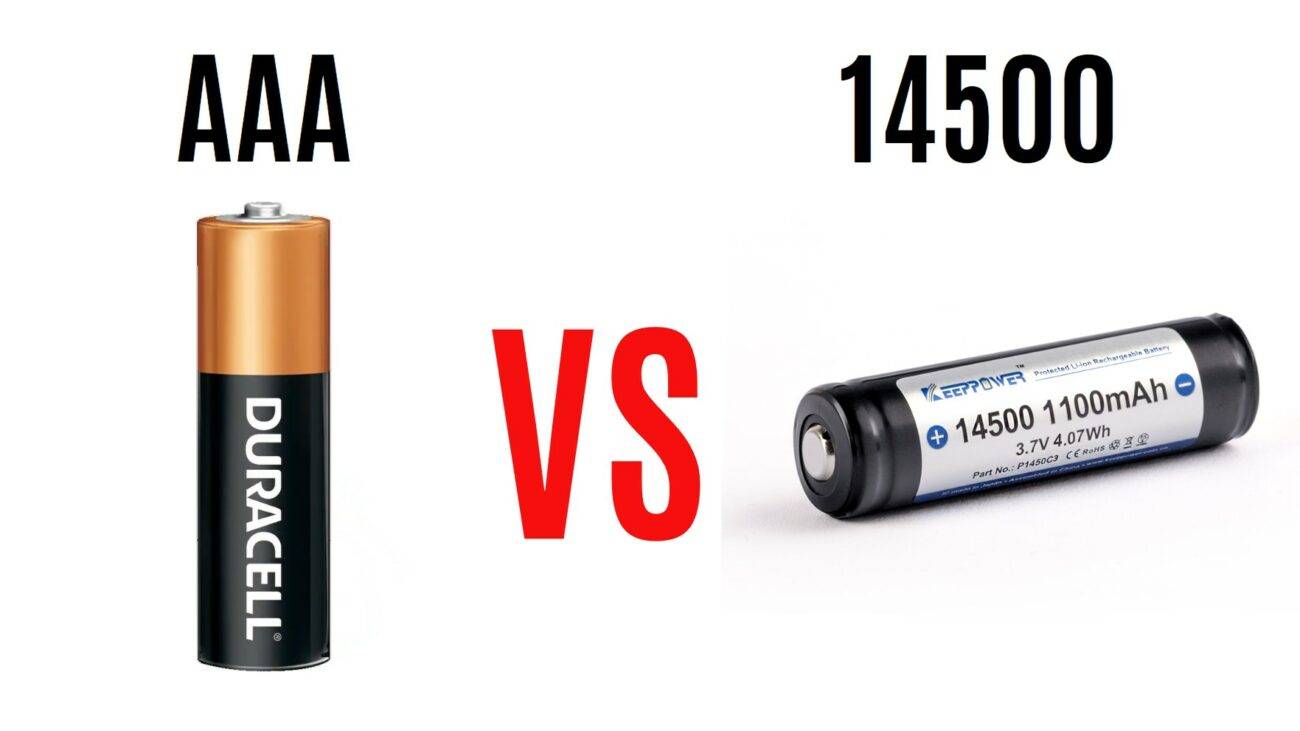Understanding the differences between 14500, AA, and AAA batteries is crucial for selecting the right power source for your devices. While all three types are commonly used in various applications, they differ significantly in size, voltage, and capacity. This guide will help clarify these distinctions to make informed decisions.
What are the key specifications of 14500, AA, and AAA batteries?
Each battery type has unique specifications that define its performance:
- 14500 Battery: A rechargeable lithium-ion battery with a nominal voltage of 3.7V and a capacity typically ranging from 600mAh to 800mAh.
- AA Battery: Commonly available in alkaline or rechargeable NiMH varieties, with a nominal voltage of 1.5V (alkaline) or 1.2V (NiMH) and a capacity ranging from 1000mAh to 3000mAh.
- AAA Battery: Similar to AA but smaller in size, with a nominal voltage of 1.5V (alkaline) or 1.2V (NiMH) and a capacity generally between 600mAh and 1200mAh.
These specifications determine how each battery performs in different devices.Chart: Key Specifications Comparison
| Battery Type | Voltage | Capacity Range |
|---|---|---|
| 14500 | 3.7V | 600mAh – 800mAh |
| AA | 1.5V/1.2V | 1000mAh – 3000mAh |
| AAA | 1.5V/1.2V | 600mAh – 1200mAh |
How do voltage levels differ among these batteries?
Voltage levels are one of the most significant differences between these battery types:
- 14500 Battery: Has a nominal voltage of 3.7V, making it suitable for high-drain devices that require more power.
- AA Battery: Provides approximately 1.5V for alkaline versions and 1.2V for NiMH versions.
- AAA Battery: Similar to AA, it offers about 1.5V for alkaline and 1.2V for NiMH.
This difference in voltage affects compatibility with devices; using a battery with an incorrect voltage can lead to poor performance or damage.Chart: Voltage Levels Comparison
| Battery Type | Nominal Voltage |
|---|---|
| 14500 | 3.7V |
| AA | 1.5V (alkaline) / 1.2V (NiMH) |
| AAA | 1.5V (alkaline) / 1.2V (NiMH) |
What are the capacity differences between 14500, AA, and AAA batteries?
Capacity indicates how much energy a battery can store and deliver over time:
- 14500 Batteries: Typically have lower capacities compared to AA batteries but provide higher energy density due to their lithium chemistry.
- AA Batteries: Generally offer higher capacities ranging from 1000mAh to over 3000mAh, making them ideal for devices requiring long runtimes.
- AAA Batteries: Offer lower capacities than AA batteries, generally between 600mAh and 1200mAh, which limits their use in high-drain applications.
Understanding these differences helps consumers choose the right battery based on their energy needs.Chart: Capacity Comparison
| Battery Type | Capacity Range |
|---|---|
| 14500 | 600mAh – 800mAh |
| AA | 1000mAh – 3000mAh |
| AAA | 600mAh – 1200mAh |
How do the dimensions of these batteries compare?
The physical size of each battery type affects compatibility with devices:
- 14500 Battery: Measures approximately 14mm in diameter and 50mm in length, similar to an AA battery.
- AA Battery: Standard size is about 14mm in diameter and 50mm in length.
- AAA Battery: Smaller than both at approximately 10.5mm in diameter and 44.5mm in length, making it suitable for compact devices.
The size difference impacts which devices can utilize each type of battery effectively.Chart: Size Comparison
| Battery Type | Diameter (mm) | Length (mm) |
|---|---|---|
| 14500 | 14 | 50 |
| AA | 14 | 50 |
| AAA | ~10.5 | ~44.5 |
Know more:
Which AAA Battery Is Better: Energizer or Duracell?
How to Understand the Differences Between AAA and 14500 Batteries?
Understanding the Differences Between 14500, AA, and AAA Batteries
How to Revive Dead AAA Batteries: Methods, Recharging, and Using AA Batteries
What Are the Differences Between 14500, AA, and AAA Batteries?
What Are the Key Differences Between AAA and 14500 Batteries?
What Are the Best D Batteries for Your Needs?
What are the advantages and disadvantages of each battery type?
Each battery type has its own set of pros and cons:
Advantages:
- 14500 Batteries
- Higher energy density allows for better performance in high-drain devices.
- Rechargeable, leading to cost savings over time.
- AA Batteries
- Widely available and used in many household devices.
- High capacity provides longer runtimes.
- AAA Batteries
- Compact size makes them ideal for smaller electronics like remote controls.
- Available in both disposable and rechargeable formats.
Disadvantages:
- 14500 Batteries
- Higher initial cost compared to disposable options.
- Requires specific chargers designed for lithium-ion chemistry.
- AA Batteries
- Alkaline versions are non-rechargeable; once depleted, they must be replaced.
- Heavier than lithium options like the 14500.
- AAA Batteries
- Lower capacity limits their use in high-drain applications compared to larger batteries.
- Rechargeable versions may have shorter lifespans than lithium options.
Understanding these advantages and disadvantages helps consumers make informed choices based on their specific needs.Buy Wholesale Battery Tips
For wholesale battery buyers or clients seeking OEM orders overseas, choosing Redway Battery is an excellent option. With over 13 years of experience, Redway offers high-quality lithium batteries as a sustainable alternative to lead-acid batteries. To make OEM orders from a reliable manufacturer like Redway Battery:
- Research potential suppliers based on their reputation and product offerings.
- Request samples to assess quality before placing bulk orders.
- Discuss customization options to meet specific project requirements.
Industrial News
Recent developments highlight significant trends within the battery industry:
- Growth in Lithium-Ion Adoption: The shift towards lithium-ion technologies is accelerating as consumers seek longer-lasting rechargeable options over traditional alkaline batteries.
- Innovations in Charging Technology: New charging solutions are being developed that enhance efficiency and reduce charging times for both lithium-ion and rechargeable alkaline batteries.
These trends indicate a dynamic market where consumer preferences are driving advancements in battery technology.
Redway Expert Views
“Understanding the differences between battery types is essential for optimizing device performance,” stated an expert from Redway Battery. “As consumers increasingly demand efficiency and sustainability, choosing the right battery—whether it’s a rechargeable Li-ion or traditional alkaline—can significantly impact their experience.”
FAQ Section
- What is the main difference between a 14500 battery and an AA battery?
The primary difference lies in voltage; a 14500 battery has a nominal voltage of approximately 3.7V, while an AA battery typically provides about 1.5V. - Can I use a 14500 battery instead of an AA?
Yes, if your device is compatible with both voltages; however, ensure that it can handle the higher voltage without damage. - How does capacity affect performance?
Higher capacity means longer runtimes; therefore, AA batteries generally last longer than AAA batteries due to their larger size and energy storage capabilities. - Are there rechargeable versions of all three types?
Yes, rechargeable versions exist for all three types—NiMH for AA and AAA, while Li-ion is used for the 14500. - What applications are best suited for each battery type?
AA batteries are great for household items; AAA batteries fit compact devices; while the 14500 is ideal for high-drain applications like flashlights.
Know more:
How to Understand the Differences Between AAA and 14500 Batteries?
What Are the Differences Between 14500, AA, and AAA Batteries?
How Do the Costs of AA and 21700 Batteries Compare Over Time?
How Does the Shelf Life of CR123 Batteries Compare to 18350 Batteries?
How Do the Capacities of 14500 and 14430 Batteries Compare?
What Are the Key Differences Between AAA and 14500 Batteries?



